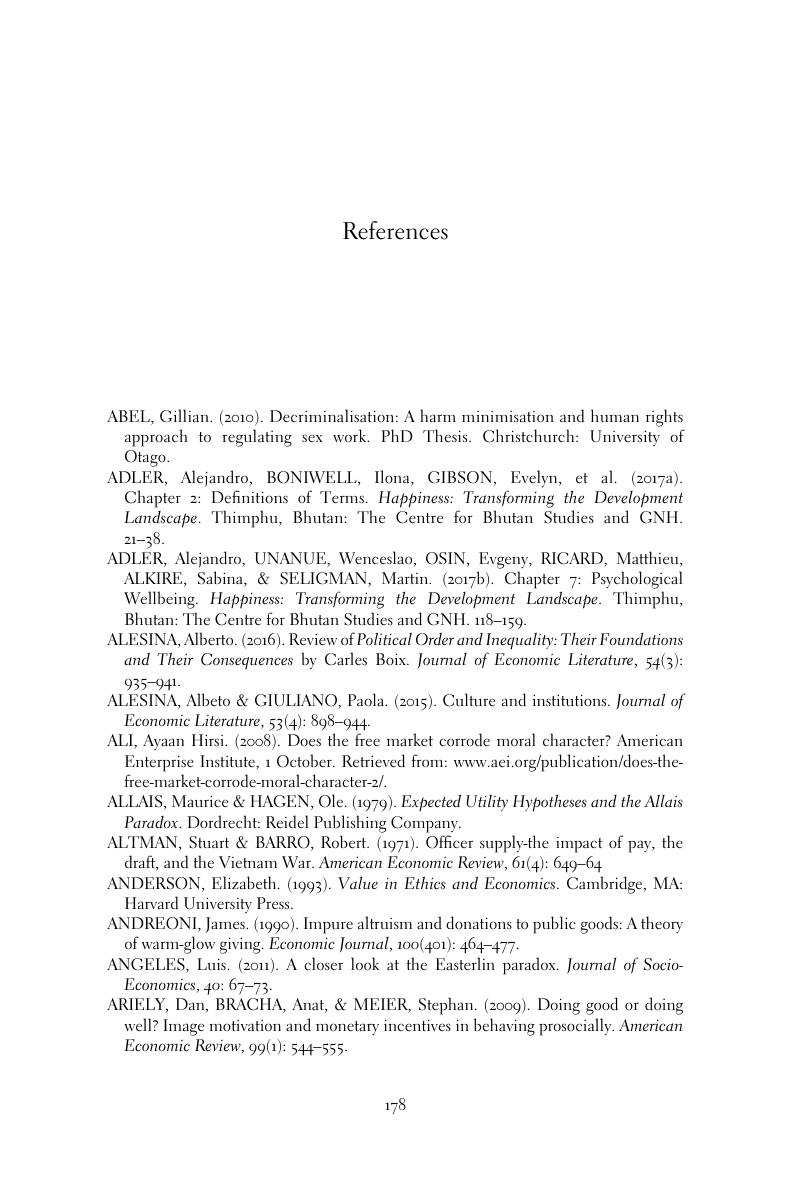Book contents
- Markets and Morals
- Markets and Morals
- Copyright page
- Contents
- Preface
- Acknowledgements
- 1 Introduction
- 2 The Well-Known Case of Lateness Fees
- 3 Extending Economic Analysis
- 4 The Anti-Market Sentiment
- 5 The Inequality/Exploitation Case against Commodification Is Invalid
- 6 Repugnance? Similar to ‘Honour’ Killing
- 7 Crowding Out or Crowding In?
- 8 Market Expansion Is a Mark of Progress
- 9 The Case for Legalizing Kidney Sales
- 10 Making Presumed Consent the Default Option
- 11 Blood Donation
- 12 Prostitution*
- 13 Conscription
- 14 Profiteering
- 15 Water: A Typical Case of Under-Pricing
- 16 Fines, Imprisonment, or Whipping?
- 17 Some Specific Areas
- 18 Concluding Remarks
- Book part
- References
- Index
- References
References
Published online by Cambridge University Press: 22 February 2019
- Markets and Morals
- Markets and Morals
- Copyright page
- Contents
- Preface
- Acknowledgements
- 1 Introduction
- 2 The Well-Known Case of Lateness Fees
- 3 Extending Economic Analysis
- 4 The Anti-Market Sentiment
- 5 The Inequality/Exploitation Case against Commodification Is Invalid
- 6 Repugnance? Similar to ‘Honour’ Killing
- 7 Crowding Out or Crowding In?
- 8 Market Expansion Is a Mark of Progress
- 9 The Case for Legalizing Kidney Sales
- 10 Making Presumed Consent the Default Option
- 11 Blood Donation
- 12 Prostitution*
- 13 Conscription
- 14 Profiteering
- 15 Water: A Typical Case of Under-Pricing
- 16 Fines, Imprisonment, or Whipping?
- 17 Some Specific Areas
- 18 Concluding Remarks
- Book part
- References
- Index
- References
Summary

- Type
- Chapter
- Information
- Markets and MoralsJustifying Kidney Sales and Legalizing Prostitution, pp. 178 - 199Publisher: Cambridge University PressPrint publication year: 2019



